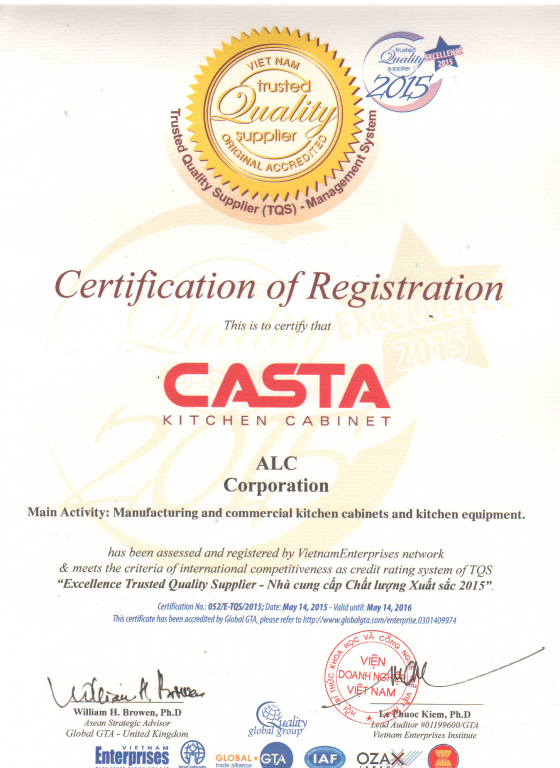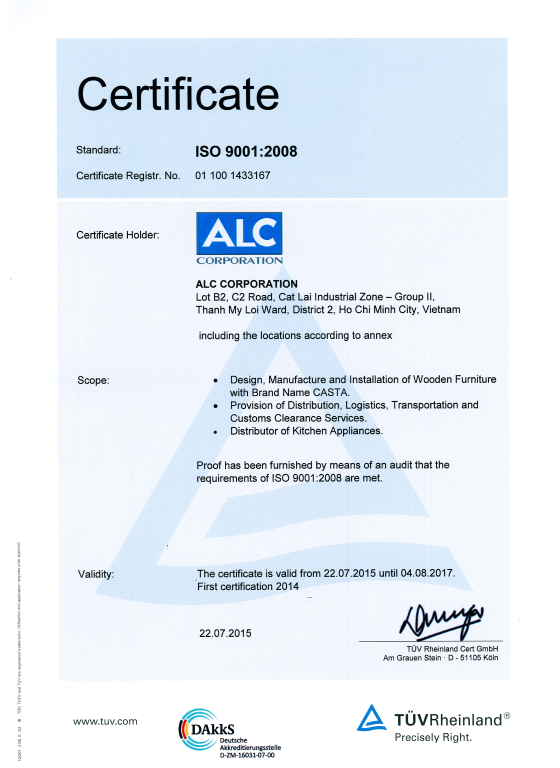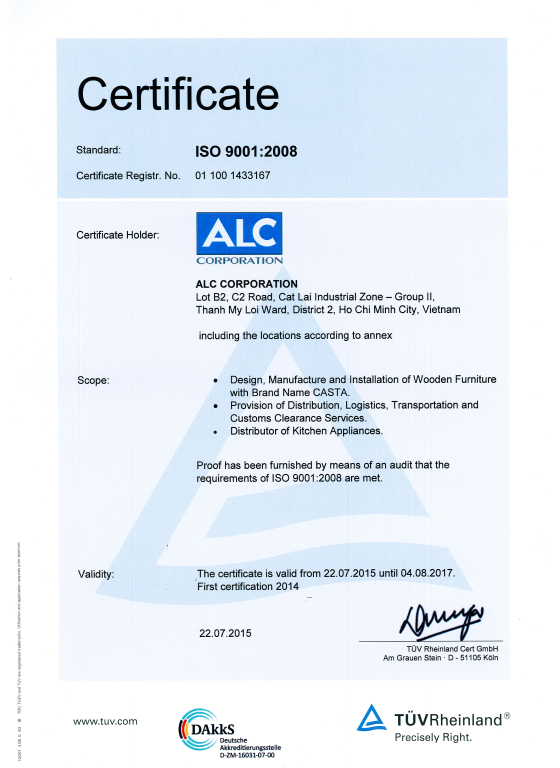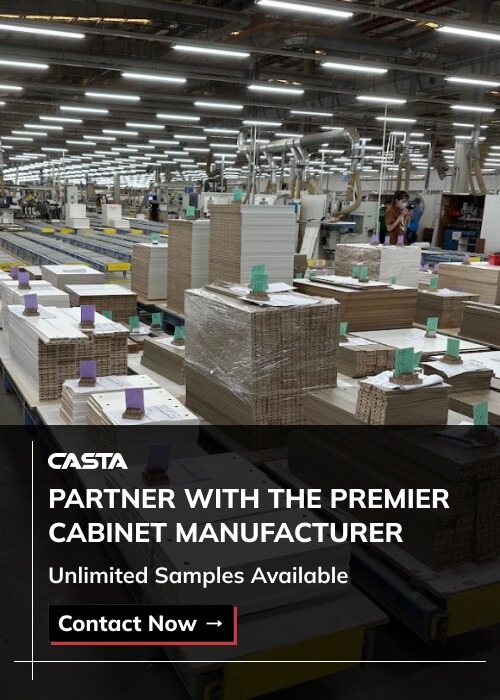Choosing the right kitchen cabinet materials can make or break a project’s success. Material selection influences durability, moisture resistance, finish options, cost-efficiency, and assembly compatibility—especially when you’re evaluating hardboard cabinets for backs, drawer bottoms, or interior liners. Contractors, cabinet brands, and furniture companies sourcing hardboard cabinets in bulk must avoid overpaying for specs they don’t need or underestimating performance requirements for high-traffic or commercial applications. While hardboard cabinets offer an economical choice for non-structural components, it’s critical to balance their strengths against alternatives like plywood or moisture-resistant MDF.
In this guide, we cover five primary types of kitchen cabinet materials (including hardboard cabinets), their subtypes, pros and cons, certifications, and real-world use cases—so you can specify the best material for your hardboard cabinets and related applications.
Table of Contents
1. Why Hardboard Deserves a Closer Look
Hardboard—one of the lesser-celebrated types of kitchen cabinet materials—is a high-density fiberboard manufactured by compressing exploded wood fibers under extreme heat and pressure. At densities of 800–1,000 kg/m³, it outperforms particle board in stiffness and dimensional stability, yet remains up to 40 % cheaper than plywood and 25 % cheaper than MDF. While critics label hardboard “too basic” or “too thin,” its applications in hardboard kitchen cabinet production are far from trivial:
- Drawer Bottoms & Back Panels: Uniform thickness (1.5–4 mm) prevents rattles and ensures a flush fit—critical for both residential and commercial cases.
- Interior Liners & Side Walls: When paired with premium veneers or painted MDF faces, hardboard keeps costs down without sacrificing visible finishes.
- Flat-Pack & RTA Lines: At roughly 1.2 kg/m² for 3 mm panels, it helps manufacturers cut freight weight by about 15 %, accelerating lead times and reducing handling labor.
Moreover, a significant share of global ready-to-assemble cabinet lines now integrate hardboard in non-structural components—a trend driven by manufacturers leveraging hardboard vs melamine hybrids to balance durability, moisture resistance, and cost.
2. What Is Hardboard? Understanding the Basics
2.1 How Hardboard Is Made
Hardboard is an engineered fiberboard created by breaking down residual wood—often from poplar, pine, or mixed hardwoods—into individual fibers through steam explosion. These fibers are then formed into mats and subjected to temperatures around 200 °C and pressures up to 20 MPa, bonding naturally without added resins. The result is a dense panel with:
- Density: 800–1,000 kg/m³, substantially higher than standard particle board (600–800 kg/m³).
- Thickness Range: Commonly 1.5–4 mm for cabinet applications—thin enough for backs and drawer bottoms yet stiff enough to resist bending.
- Fiber Orientation: Random fiber alignment provides uniform strength in all directions, an advantage over veneer-grain–dependent plywood.
Common Variants:
- Standard Hardboard: A dense, non-structural panel manufactured by pressing exploded wood fibers under high heat and pressure without any surface treatments. Standard hardboard features a raw, smooth fiber surface ideal for interior applications such as cabinet backs and drawer bottoms where structural loads are minimal.
- Tempered Hardboard: Hardboard panels that have been impregnated with oils or resins and then heat-treated to increase durability and moisture resistance. Tempered hardboard absorbs up to 40% less water than its untreated counterpart, making it suitable for slightly humid environments like kitchen cabinet backs or inside pantry units.
- Perforated Hardboard (Pegboard): Hardboard sheets factory-punched with a regular grid of holes (commonly 1 inch on center) to support hooks, pegs, and organizing accessories. Often used in workshop-style cabinetry, tool walls, and utility storage solutions, perforated hardboard combines the economy of standard hardboard with built-in functionality for hanging utensils, tools, or decorative elements.
Each of these hardboard types plays a distinct role in cabinetry: standard hardboard offers a cost-effective backing material, tempered hardboard provides enhanced moisture resilience where needed, and perforated hardboard adds customizable storage options without significant added expense.
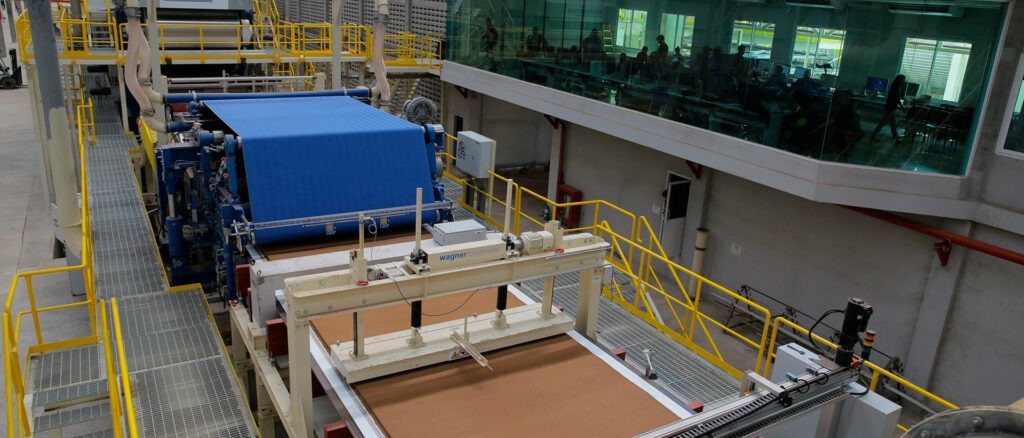
2.2 Where It’s Used in Cabinetry
Hardboard’s combination of thin profile and rigidity makes it a go-to among types of kitchen cabinet materials for non-structural components:
- Back Panels: Grooved into cabinet carcasses for a seamless, hidden fit that maintains square alignment.
- Drawer Bottoms: Uniform thickness prevents drawer floors from bowing under weight, ensuring smooth gliding.
- Side Linings & Interior Panels: When budget-conscious brands need consistent panel thickness behind premium facades, hardboard is the economical solution.
- Wall-Mounted Storage & Pegboards: Perforated hardboard transforms plain cabinet interiors into customizable storage zones for hooks, baskets, and tool rails.
- Decorative Lamination: Laminated hardboard kitchen cabinet panels receive melamine, veneer, or painted finishes, blending invisibly with high-end exteriors without warping.
By understanding what hardboard is and where it excels, contractors and cabinet companies can strategically integrate this cost-effective substrate—maximizing performance while minimizing waste and expense.
3. Five Benefits of Hardboard Cabinets for Large-Scale Projects
When evaluating hardboard cabinets for high-volume or commercial applications, these five advantages stand out—delivering savings, performance, and installation ease that few other types of kitchen cabinet materials can match.
3.1 Cost Efficiency
- Material Savings: Hardboard panels cost up to 40 % less than plywood or solid wood of comparable thickness, directly lowering raw-material expenses on bulk orders.
- Processing Economy: Its uniform composition means fewer rejects in CNC cutting and edge-banding, reducing waste by up to 12 % compared to particle board.
- Total Project Impact: On a 500-unit RTA job, switching backs and drawer bottoms to hardboard can save over $15,000 in material and processing costs alone—funds that can be reallocated to premium door styles or hardware.
Learn more: What are RTA cabinets?
3.2 Smooth and Paintable Surface
- Zero Grain, Zero Voids: The dense fiber matrix creates a flawless substrate—ideal for high-build primers, UV-cured coatings, and mirror-gloss lacquers without telegraphing wood grain.
- Uniform Adhesion: Lamination of melamine or veneer on a hardboard kitchen cabinet substrate yields consistent bonding across large panels, avoiding edge-peeling often seen in hardboard vs melamine debates.
- Finish Versatility: From matte waterborne paint for modern minimalism to high-gloss UV finishes in commercial kitchens, hardboard gives contractors and brands a blank canvas for every design brief.
3.3 High Density for Stability
- Load Strength: With densities of 800–1,000 kg/m³—30 % higher than typical particle board—hardboard delivers enhanced rigidity, preventing sag in thin backs and drawer floors.
- Dimensional Control: Swelling under 0.2 % in 85 % RH environments ensures drawer bottoms remain square and true, limiting warranty callbacks for misaligned or stuck drawers.
- Consistency: Unlike natural wood that can vary by batch, hardboard panels are manufactured to exacting tolerances, ensuring each hardboard cabinet component fits perfectly in automated assembly lines.
3.4 Flexibility & Easy to Cut
- CNC Optimization: Its uniform density allows routers to carve intricate profiles, ventilation patterns, or logo inlays with minimal chipping—critical for branded furniture lines.
- Custom Shapes: From curved end panels in commercial displays to die-cut knock-outs for plumbing access in kitchen vanities, hardboard sustains complex geometries without cracking.
- Quick Tooling: Unlike melamine particle board—which may require slower feed rates and specialty bits—hardboard cuts cleanly at higher speeds, accelerating shop throughput.
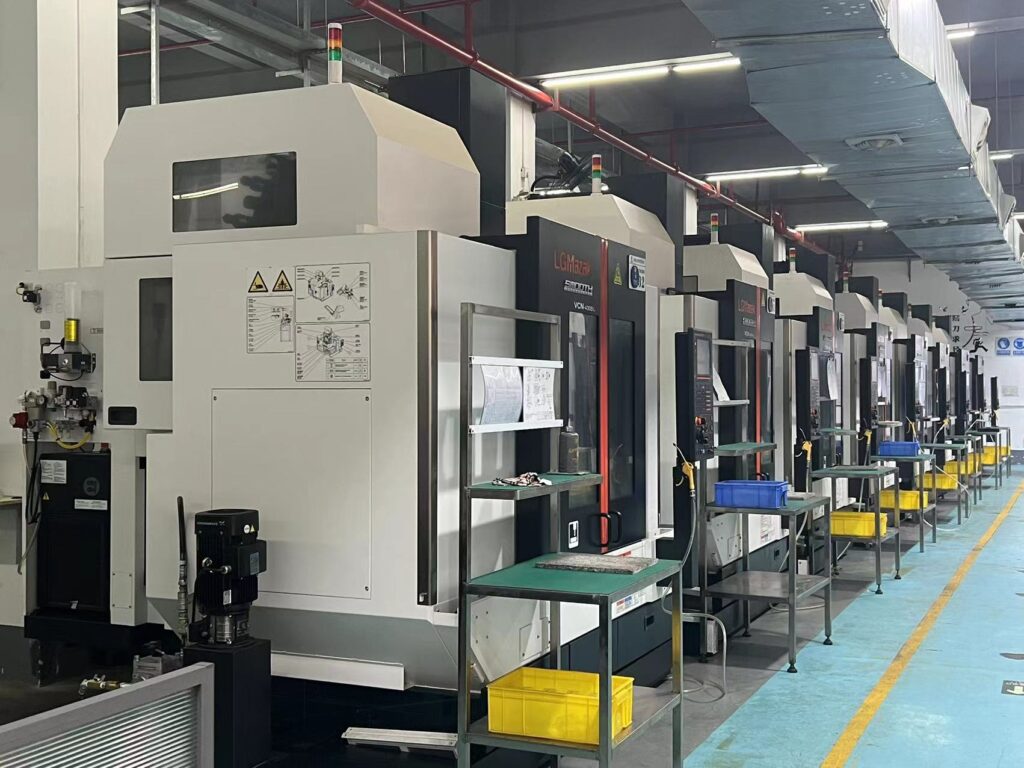
3.5 Lightweight for Shipping and Assembly
- Freight Reduction: At approximately 1.2 kg/m² for a 3 mm sheet, hardboard lowers container weight by up to 15 % compared to MDF, directly reducing ocean-freight and air-cargo costs.
- On-Site Handling: Lighter panels minimize strain on installers and lower the risk of drop damage—especially important for large-format backs and side liners.
- Knock-Down Efficiency: In flat-pack systems, thinner, lighter boards enable slimmer packaging profiles, allowing more units per pallet and further driving down logistics expenses.
By leveraging these benefits, contractors and cabinet brands can confidently specify what is hardboard in their next large-scale or RTA project—unlocking substantial cost savings, finish quality, and assembly speed while maintaining reliable performance.
4. Four Drawbacks of Hardboard Cabinets (and How to Address Them)
While hardboard cabinets offer significant cost and performance advantages, they come with limitations that contractors and cabinet brands must plan for. Below are four common drawbacks—each followed by practical solutions to ensure your projects benefit from hardboard’s strengths without exposing weaknesses.
4.1 Limited Moisture Resistance
Issue:
- Standard hardboard absorbs water readily: unsealed edges can swell up to 20 % in high-humidity environments, leading to panel warping or delamination in hardboard kitchen cabinet backs and drawer bottoms.
- Compared with melamine particle board (which swells around 8 %), hardboard’s susceptibility makes it a poor choice for wet areas such as under-sink cabinets or utility rooms.
Solution:
- Tempered Hardboard: Specify oil- or resin-impregnated variants—these panels reduce water uptake by up to 40 % versus untreated boards, making them suitable for mild moisture zones.
- Moisture-Barrier Coatings: Apply industrial-grade epoxy primers or polyurethane sealers to all cut edges and surfaces; studies show a sealed panel can resist water ingress for over 72 hours in 90 % RH conditions.
- Hybrid Assemblies: In mixed-material kitchens, use hardboard for interiors but switch to PVC-laminated particle board or exterior-grade plywood behind sinks and dishwashers.
Learn more: Waterproof outdoor kitchen cabinets
4.2 Not Load-Bearing
Issue:
- What is a hardboard? It’s engineered for high density but not structural strength: a 3 mm drawer bottom holds around 15 kg uniformly, whereas a comparable plywood bottom supports 30 kg.
- Relying on hardboard for shelving or full carcass panels risks sagging under heavy dishware or equipment.
Solution:
- Selective Use: Reserve hardboard strictly for non-structural components—backs, drawer bases, and interior liners—where its uniform thickness and smooth surface shine.
- Reinforced Frames: When a thin interior panel is needed in a structural area, sandwich hardboard between a thin metal or wood frame to bear loads.
- Hybrid Carcasses: Combine multi-ply plywood or MDF for side and bottom panels with hardboard backs and liners to optimize cost and performance.
4.3 Brittleness If Mishandled
Issue:
- Hardboard’s dense fiber network can crack or split if nails or screws are driven without pre-drilling; edge panels in particular are vulnerable to chipping, a key concern in hardboard vs melamine debates where melamine often wins for impact resistance.
Solution:
- Pilot Holes & Fasteners: Always drill pilot holes and use low-torque screw settings; alternatively, install blind-mount clips or T-nuts for secure, chip-free fastening.
- Edge Framing: Surround exposed edges with ABS edge banding or thin hardwood strips to protect against impact and reduce chipping.
- Support Backing: In drawer bottoms, glue hardboard into routed grooves on three sides—this backing distributes loads and prevents localized cracking around fasteners.
4.4 Lower Perceived Value
Issue:
- Market perception often equates hardboard cabinets with economy-grade products. End-users may view them as “cheap” compared to solid wood or high-pressure laminates—even if performance metrics are comparable in non-structural uses.
Solution:
- Strategic Pairing: Combine hardboard interiors with premium exterior facades—solid wood doors, thermofoil finishes, or decorative laminates—to convey quality where it matters.
- Brand Messaging: Highlight your use of hardboard kitchen cabinet components as a sustainable, cost-effective choice backed by third-party certifications (CARB Phase 2, FSC, E1) in marketing materials.
- Quality Assurance: Offer sample mock-ups showing hardboard-backed cabinets in upscale environments—demonstrating that hidden components can be economical without compromising the overall aesthetic.
4.5 When Not to Use Hardboard Cabinets
Even with the solutions above, there are scenarios where hardboard—despite being one of the most economical types of kitchen cabinet materials—is simply the wrong choice. Avoid specifying hardboard kitchen cabinet components in these applications to prevent performance failures and customer dissatisfaction:
- High-Moisture or Wet Areas
- Under-sink cabinets, dishwasher enclosures, laundry rooms, or outdoor kitchens where water exposure regularly exceeds 90 % RH for extended periods.
- Warning: Even tempered hardboard or coated panels will eventually swell or delaminate if repeatedly drenched or exposed to steam.
- Structural or Load-Bearing Uses
- Shelves, pull-out trays, pantry carcasses, or island support panels carrying heavy cookware, small appliances, or decorative loads above 15–20 kg.
- Note: Hardboard’s uniform density and thin cross-section lack the bending strength of plywood or MDF; use engineered structural panels instead.
- High-Impact or Wear-Prone Surfaces
- Visible side panels, kickplates, or bar fronts subject to kicks, bangs, or frequent contact.
- Caution: Hardboard edges chip more easily than melamine-faced particle board or PVC-laminated panels in these exposed zones.
- Outdoor or Uncontrolled Environments
- Pool cabanas, patio kitchens, or marine settings with salt air and temperature swings.
- Advisory: Hardboard—even when tempered—cannot withstand UV degradation or extreme humidity fluctuations long-term.
In these “no-go” zones, specify more robust types of kitchen cabinet materials—such as exterior-grade plywood, moisture-resistant MDF, or solid wood—to ensure the durability and perception of quality your projects demand.
5. Hardboard vs. Melamine: A Side-by-Side Comparison
When specifying types of kitchen cabinet materials, understanding the nuances between hardboard vs melamine particle board is critical. Both substrates serve distinct roles in cabinet construction, but they differ in core composition, finish options, moisture performance, cost, and ideal applications.
Why Compare Hardboard and Melamine?
- Cost Optimization: Hardboard cabinets can drive raw-material savings, while melamine offers a ready-to-install finish.
- Performance Balance: Hardboard’s density and CNC-friendliness versus melamine’s durability and wide color range.
- Application Fit: Matching substrate to function—backs and drawers versus carcasses and door fronts.
Learn more: What are melamine cabinets?
Below is a detailed feature comparison of hardboard and melamine particle board:
| Feature | Hardboard | Melamine Particle Board |
| Core Material | Compressed wood fibers | Particle board core (wood particles + resin) |
| Typical Thickness | 1.5–4 mm (backs, drawers) | 12–28 mm (carcass, shelving) |
| Surface Finish | Smooth; accepts paint, UV coating, lacquer, laminate overlays | Pre-laminated decorative paper (wide color/pattern range) |
| Moisture Resistance | Low (standard) to moderate (tempered) | Medium; sealing edges reduces water ingress |
| Mechanical Strength | Medium-high stiffness relative to thickness | Medium strength; depends on board density |
| Dimensional Stability | <0.2 % expansion in high humidity | ~0.5 % expansion without edge seal |
| Durability & Maintenance | Requires sealing; paint/coating may wear over time | Highly durable surface resists scratches, stains, and abrasion |
| Best Use Case | Back panels, drawer bottoms, interior liners | Carcass panels, door fronts, exposed shelving |
| Installation Considerations | Pre-drill pilot holes; edge band or frame to protect edges | Ready to install; minimal on-site finishing |
| CNC & Customization | Excellent for precise cuts, vents, perforations | Good for standard routing; intricate profiles need edge band |
| Finish Options | Unlimited—paint, veneer, laminate, UV lacquer | Limited to available melamine decors, but extensive palette |
| Environmental Impact | Can be made resin-free; often FSC-certified | Requires formaldehyde-resin bond; CARB Phase 2 compliant |
| Cost per Square Foot | $0.30–$0.50 (3 mm) | $0.70–$1.20 (12 mm, pre-laminated) |
| Weight | ~1.2 kg/m² (3 mm) | ~10–15 kg/m² (12 mm) |
| Edge Treatment | Edge banding or sealing mandatory | Factory edge banded in many cases |
| Color & Pattern Variety | N/A—finish applied post-manufacture | Hundreds of patterns: wood grains, solids, textures |
Key Takeaways for Contractors & Brands:
- Hardboard shines where low cost, lightweight shipping, and CNC flexibility are priorities—especially in non-structural roles like backs and drawer bottoms.
- Melamine particle board excels for visible surfaces requiring scratch resistance, easy cleaning, and fast installation on carcasses, cabinets sides, and shelving.
Learn more: Sourcing Cabinets and Furniture from Vietnam: Your Ultimate Guide
By matching each substrate to its ideal function, you can optimize cabinet lines for performance, aesthetics, and budget—leveraging the full range of types of kitchen cabinet materials to deliver superior results.
6. Best Use Cases for Hardboard Cabinets in Modern Projects
Understanding what is hardboard and its optimal applications ensures you leverage its strengths in the right contexts. Below are key scenarios where hardboard cabinets outperform other types of kitchen cabinet materials, with extra insights for contractors and brands.
6.1 Ideal for Non-Structural Parts
- Back Panels & Drawer Bases: Hardboard’s uniform 1.5–4 mm thickness guarantees rattle-free backs and flat, stable drawer bottoms—critical for precision alignment in high-volume cabinet lines.
- Hidden Liners & Interior Shelves: When finished exteriors demand premium substrates, hardboard provides a consistent, low-cost backing behind veneers, laminate, or painted MDF doors.
- Cost-Sensitive Inserts: In commercial millwork—such as office credenzas or library cabinetry—hardboard inserts deliver visual unity without the expense of structural panels.
6.2 Great for RTA Furniture & Flat-Pack Projects
- Shipping Efficiency: At just 1.2 kg/m², 3 mm hardboard sheets reduce container weight by 15 % versus MDF, cutting ocean freight and air cargo costs.
- Knock-Down Assembly: Pre-cut hardboard components slot easily into carcass grooves, accelerating on-site assembly for contractors and reducing labor hours in hardboard kitchen cabinet installations.
- Consistent Quality: Unlike natural wood panels that vary by batch, hardboard’s factory-controlled density and thickness ensure every flat-pack kit fits flawlessly, minimizing returns and rework.
Learn more: Top RTA kitchen cabinet manufacturers
6.3 Best for Moisture-Controlled Indoor Spaces
- Dry-Use Environments: Hardboard cabinets excel in offices, walk-in closets, pantries, and bedrooms where humidity remains under 60 %—delivering cost savings without moisture worries.
- Protected Wet Zones: In transitional areas like butler’s pantries or wine storage rooms, tempered hardboard (oil-treated) can handle occasional condensation when sealed properly.
- Avoid Unsealed Under-Sink Use: Unless you apply moisture-barrier coatings or use tempered variants, standard hardboard swells in high-humidity zones—making it less suitable near dishwashers or sinks.
6.4 Specialized Commercial Applications
- Display & Retail Fixtures: Perforated hardboard backs allow flexible pegboard systems for tool displays or retail merchandising, combining hardboard vs melamine functionality with customizable layouts.
- Hospitality & Office Millwork: Cost-effective wall panels, credenza interiors, and modular storage units benefit from hardboard’s smooth paintable surface and flat-pack shipping.
- Educational & Institutional Furniture: In schools and laboratories where budgets are tight, hardboard cabinets provide durable, easily repairable interiors behind robust exterior panels.
Learn more: The Ultimate Guide to Modern Design Kitchen Cabinets
Current Industry Trend
Many European and Vietnamese manufacturers now rely on laminated hardboard panels in high-volume apartment developments and hospitality projects—where speed, economy, and consistent performance outweigh decorative concerns. These hardboard kitchen cabinet components are often paired with thermofoil or melamine-exterior carcasses, striking the right balance between cost and aesthetics in modern modular construction.
Learn more: Kitchen cabinet trends
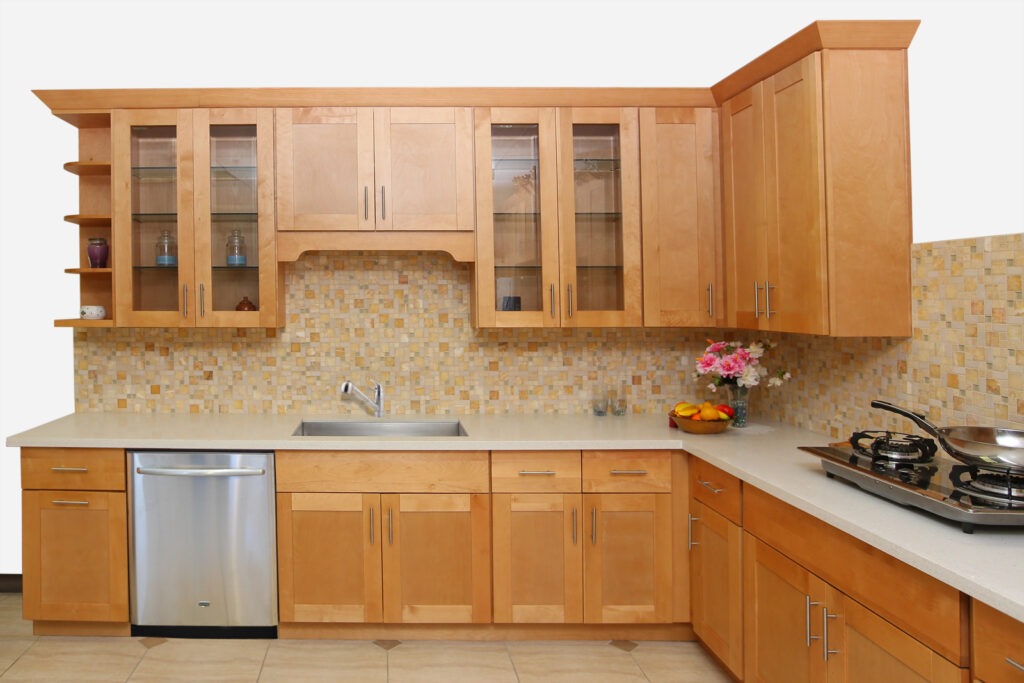
7. Certifications & Standards for Health and Safety
When specifying hardboard cabinets or any of the types of kitchen cabinet materials, choosing certified substrates ensures compliance with health, environmental, and performance criteria. Below is an expanded overview of key certifications—what they cover, why they matter, and how they apply specifically to hardboard kitchen cabinet components.
| Certification | Materials Covered | Purpose & Impact |
| CARB Phase 2 | MDF, Particle Board, Plywood, Hardboard | • Formaldehyde Regulation: Limits emissions to ≤ 0.05 ppm, protecting indoor air quality and occupant health.• North American Compliance: Mandatory for any wood-based panels sold in California and adopted by other U.S. states.• Hardboard Impact: Ensures your hardboard drawer bottoms and backs won’t off-gas harmful chemicals in enclosed cabinetry. |
| E1 (EU Standard) | MDF, Plywood, Particle Board, Hardboard | • VOC Control: Caps total volatile organic compounds at ≤ 0.1 ppm, a benchmark for low-emission products internationally.• Global Recognition: Often accepted in North America as proof of indoor-air quality.• Hardboard Impact: Guarantees hardboard kitchen cabinet linings meet stringent European health standards. |
| FSC Mix-Credit | All wood-based substrates | • Responsible Forestry: Verifies that at least 70 % of wood fibers come from FSC-certified forests, with the remainder from controlled sources.• Chain-of-Custody Tracking: Ensures sustainable sourcing across the supply chain.• Hardboard Impact: Confirms your high-density fiberboard supports ethical forestry and sustainability goals. |
| JIS Four-Star | MDF, Particle Board, Hardboard | • Moisture & Emission Standard: Japan’s highest grade for engineered wood panels, combining low formaldehyde with enhanced humidity resistance.• Performance Assurance: Indicates panels will resist warping and dimensional changes in humid climates.• Hardboard Impact: Validates that tempered hardboard choices will perform reliably in controlled indoor environments. |
Why These Standards Matter for Contractors & Brands
- Health & Safety: Cabinets fabricated with uncertified boards can off-gas formaldehyde and VOCs, triggering occupant complaints or legal penalties.
Learn more: Non toxic kitchen cabinets
- Marketing Advantage: Promoting hardboard vs melamine choices that exceed certification thresholds demonstrates a commitment to quality and sustainability—appealing to eco-conscious clients.
- Warranty & Liability: Certified types of kitchen cabinet materials reduce the risk of customer claims related to off-gassing, swelling, or structural failures—saving time and money on replacements.
- Regulatory Compliance: Importing materials without CARB, E1, or JIS certification can lead to customs holds, fines, and shipment rejections, especially in North America and the EU.

8. Why Choose Casta Cabinetry for Hardboard Cabinet Supply
When sourcing hardboard cabinets or components for hardboard kitchen cabinet production, Casta Cabinetry stands out for its blend of precision, customization, compliance, and logistics expertise.
8.1 Precision Engineering from Vietnam
- Advanced CNC & Automation: Equipped with European HOMAG, Biesse, and SCM lines, Casta achieves cutting tolerances within ±0.1 mm—critical for consistent hardboard cabinets and hardboard vs melamine hybrid panels, ensuring perfect drawer-bottom fits every time.
- High-Volume Capacity: Two integrated factories cover over 100,000 m², producing 200+ containers of finished hardboard cabinets and panel components monthly. This scale guarantees reliable availability of hardboard cabinets even during peak demand.
- Quality Control: In-house labs rigorously test panel density, moisture absorption, and flatness on every lot—ensuring each hardboard cabinet sheet meets or exceeds project specifications.
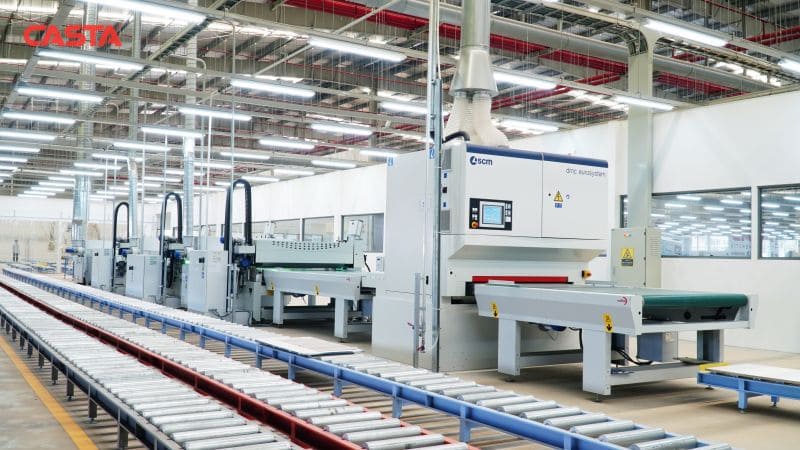
8.2 Tailored for B2B Projects
- OEM/ODM Flexibility: Whether you need perforated pegboard liners, tempered hardboard cabinets for moisture zones, or specialty-coated surfaces, Casta delivers custom sizes, finishes, and packaging to match your branding and assembly processes.
- Design Collaboration: Through 3–5 rounds of CAD/BIM iterations, you finalize panel layouts, cutouts, and edge treatments before production—eliminating costly rework and clarifying what is hardboard early in the design phase.
- Scalable Runs: From small pilot orders to multi-thousand–unit flat-pack lines, Casta adjusts production schedules and material sourcing to fit your hardboard cabinet project timeline and budget.
Learn more: Casta’s ideal custom cabinets

8.3 Certified, Safe Materials
- Full Certification Suite: All hardboard cabinets panels carry CARB Phase 2, E1 (EU), and FSC Mix-Credit certifications—ensuring your hardboard cabinets comply with North American and global indoor air-quality and sustainability standards.
- Third-Party Testing: Independent labs verify formaldehyde emissions, VOC levels, and moisture resistance for hardboard kitchen cabinet substrates, providing you peace of mind when specifying hardboard cabinets for commercial and residential builds.
Learn more: Casta’s ISO-Qualified Cabinet Certification: Setting the Gold Standard for Quality and Reliability
8.4 Fast Shipping & Export Support
- Streamlined Lead Times: Typical door-to-port schedules of 25–40 days for hardboard cabinets, even on large-volume hardboard cabinets orders, help you avoid production bottlenecks.
Learn more: Lead Times & Supply Chain Resilience: Navigating Potential Disruptions
- Optimized Packaging: Flat-pack and knock-down kits for hardboard cabinets are engineered to maximize container utilization while protecting delicate hardboard edges—minimizing freight damage and claims on your hardboard cabinets shipments.
- Comprehensive Documentation: Phytosanitary certificates, material test reports, customs paperwork, and delivery tracking are bundled with every hardboard cabinets consignment. A dedicated export team provides real-time updates and resolves any issues within 24 hours.
Learn more: Casta’s outstanding international projects
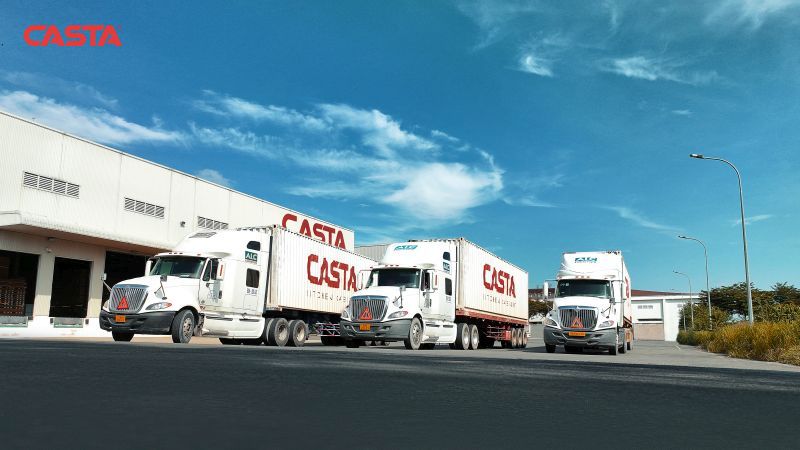
9. Conclusion: Are Hardboard Cabinets a Good Choice?
Hardboard cabinets offer budget-friendly, non-structural solutions—ideal for drawer bottoms, backs, and flat-pack RTA systems—while hardboard kitchen cabinet panels deliver a smooth, paint-ready surface at up to 40 % lower cost. Although hardboard cabinets require tempered variants or coatings for moisture zones and aren’t load-bearing, their lightweight durability and ease of machining make them a strategic choice in the hardboard vs melamine comparison. Partnered with premium exteriors and a reliable supplier like Casta Cabinetry, hardboard cabinets bring exceptional value to large-scale commercial and residential projects.
10. FAQ: Hardboard Cabinets
What is hardboard, and how is it different from melamine?
Are hardboard cabinets durable enough for kitchens?
Is hardboard good for flat-pack furniture?
What finish options are available for hardboard?
Does Casta Cabinetry offer certified hardboard cabinets?
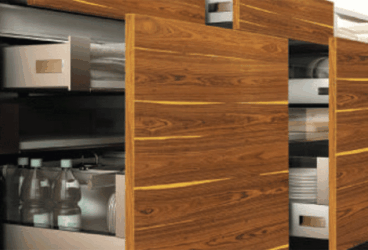
MDF vs Plywood for Kitchen Cabinets – Which is Better?...
MDF vs Plywood for kitchen cabinets is one of the most important decisions contractors and furniture brands must make wh...
11/14/2025 | David Nguyen
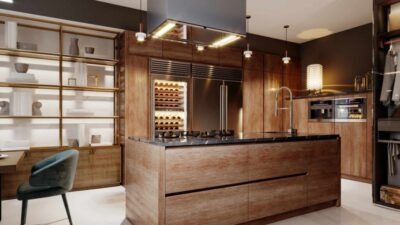
Plywood Kitchen Cabinets: Pros and Cons Explained for Contra...
Plywood kitchen cabinets are now one of the most preferred options in modern kitchen manufacturing, combining durability...
11/12/2025 | David Nguyen
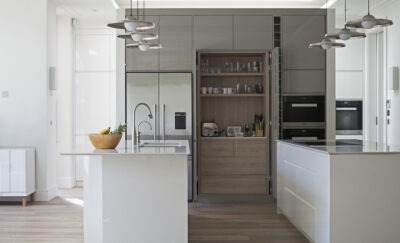
Best Italian Kitchen Cabinets: Modern Design, Precision Craf...
Italian kitchen cabinets represent the gold standard in modern kitchen design — celebrated for their craftsmanship, slee...
10/29/2025 | David Nguyen
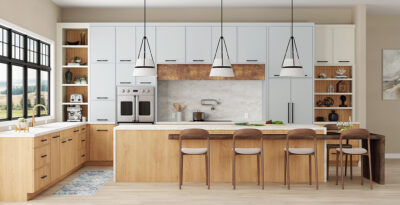
European vs American Kitchen Cabinets: Key Differences &...
European vs American kitchen cabinets is a core decision for anyone specifying cabinetry for modern buildings or homes. ...
10/27/2025 | David Nguyen
Contact us
Casta is always ready to listen and answer all customers' questions
